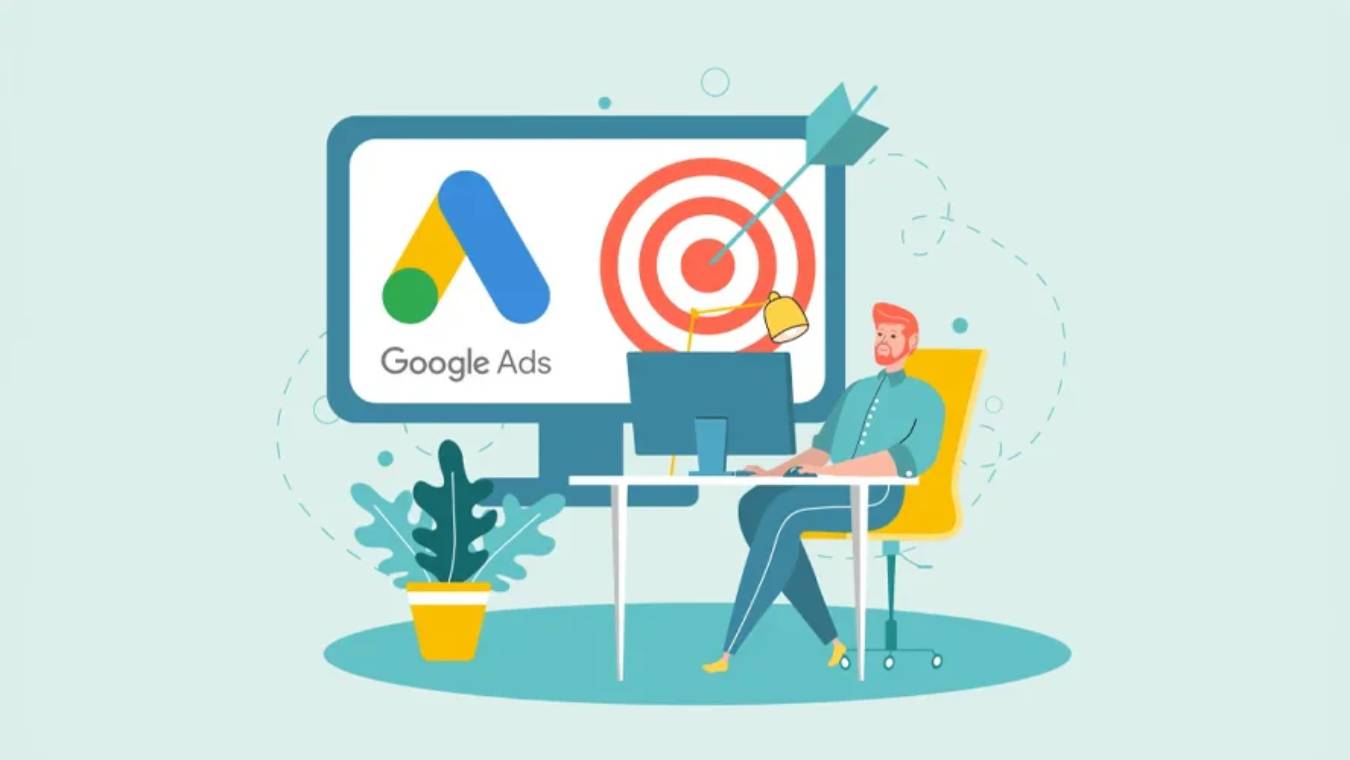Google Ads has seen massive changes in recent years from keyword match type evolution to automated bidding strategies and the rollout of Performance Max. Now, Google has launched AI Max for Search Ads, and naturally, there’s a lot of buzz.
Google claims AI Max is a comprehensive suite of AI-driven tools designed to improve your Search campaign performance. It promises more conversions, better targeting, and simplified campaign creation, especially useful for advertisers juggling multiple settings.
But what is AI Max, and how does it differ from what you already do in your campaigns?
Let’s cut through the hype and explore what AI Max truly offers, what’s new (and what’s not), and whether it’s worth testing – particularly for small, medium, and large Australian businesses.
What Is AI Max?
According to Google, AI Max is:
“A comprehensive suite of targeting and creative enhancements that brings the best of Google AI to help you take your Search campaigns to the next level.”
In simpler terms, AI Max bundles together several existing technologies, such as:
- Broad match keywords
- Dynamic Search Ads (DSAs)
- Automatically created assets
- Final URL expansion
- Improved reporting and targeting controls
With AI Max, you enable a single setting in your Search campaign that activates these features. Google then uses its machine learning algorithms to match queries, dynamically create ad assets, and even route users to different landing pages it believes will perform better.
The Promise: More Conversions, Same Cost
Google’s internal data says:
- Advertisers using AI Max see 14% more conversions at the same cost-per-action (CPA).
- Those previously using only exact or phrase match keywords are seeing up to 27% more conversions.
Sounds like a no-brainer, right?
Well, here’s the catch: these stats are based on enterprise scale advertisers, like L’Oréal, who spend millions and provide massive datasets for Google’s AI to optimise against.
That’s not the reality for most businesses in Australia, especially small, mid-sized and large-sized advertisers spending $5K-$50K per month. So, while these results are promising, they may not translate directly to your account.
What’s Actually New in AI Max?
Let’s break it down:
| Feature | Already Exists? | Included in AI Max? |
| Broad Match Keywords | ✅ | ✅ |
| Automatically Created Assets | ✅ | ✅ |
| Final URL Expansion | ✅ | ✅ |
| Dynamic Search Ads (DSAs) | ✅ | ✅ |
| Keywordless Matching | 🆕 | ✅ |
| Ad Group – Level Geo Targeting | 🆕 | ✅ |
| Enhanced Reporting (Assets, URLs) | 🆕 | ✅ |
The real innovation with AI Max is not new technology; it’s integrating of multiple existing features into one streamlined, automated approach.
Think of it as a blend of:
- Broad match + DSA - style targeting
- Responsive ad creation + flexible landing pages
- Smart bidding with better machine learning inputs
Keywordless Search: The Bigger Shift
One of the most talked about features in AI Max is the move toward “keywordless” targeting, a sign that Google’s long-term vision may not revolve around keywords at all.
This doesn’t mean keywords are dead (yet), but AI Max is part of a trend:
- Dynamic matching based on landing page content
- AI-generated ad headlines and descriptions
- Contextual targeting using behavioural and search intent signals
Example: If someone searches for “colourful midi dresses for spring and summer,” your exact match keyword campaign might not appear. Broad match could, but AI Max takes it further by:
- Adjusting your ad copy in real time
- Selecting a better landing page (even if it’s not the one you originally assigned)
- Creating new headlines based on your website and user intent
So, while broad match expands reach, AI Max enhances relevance with adaptive content and automated URL routing.
AI Max vs. Broad Match: What’s the Real Difference?
Here’s how AI Max stacks up against traditional broad match campaigns:
| Feature | Broad Match | AI Max |
| AI – Powered Keyword Reach | ✅ | ✅ |
| Auto Ad Copy Generation | ❌ | ✅ |
| Landing Page Flexibility | ❌ | ✅ |
| Final URL Expansion | ❌ | ✅ |
| DSA – like Matching | ❌ | ✅ |
| Reporting Enhancements | ❌ | ✅ |
The conclusion? Broad match gives you reach; AI Max adds AI-based relevance.
What About Control and Customisation?
A valid concern among advertisers is losing control when using automation – heavy tools. AI Max does offer a few features to ease that worry:
- Ad Group-Level Geo Targeting: Now, you can target NSW in one ad group and Victoria in another without duplicating campaigns.
- URL Inclusions/Exclusions: You can still guide which pages are eligible for traffic.
- Brand Settings: Control how your brand name appears or is excluded in search queries.
- Improved Asset Reporting: Similar to Mike Rhodes' famous script, AI Max will introduce more transparent reporting, especially around automatically created assets.
These enhancements mean you retain more transparency than early Performance Max users had – but don’t expect the same level of manual control as traditional campaigns.
A Reality Check for Advertisers
If you’re a digital marketer, agency, or small-to-medium business (SMB) offering digital marketing services, here’s how to think about AI Max: it’s not just about big data or automation, it’s about using smart tools to get better results with the resources you have. Whether you’re running paid ads, SEO, content marketing, or email campaigns, AI Max can help streamline your efforts and improve performance without blowing the budget.
A Reality Check for Advertisers
- Businesses with consistent conversion volume (30+ conversions/month)
- Brands looking to test AI-powered scale
- Marketers who want to simplify campaign builds
Who Should Avoid It (for now)?
- Low-budget campaigns with tight targeting needs
- Niche B2B advertisers with complex buyer journeys
- Brands who want full manual control over creative and keyword logic
How to Test AI Max in Search Ads Campaign? (Safely)
The expert in the video gives smart advice: don’t test this on your best-performing campaigns.
Here’s a solid testing strategy:
- Choose a mid-performing campaign that gets at least 30 - 50 monthly conversions.
- Duplicate it and turn on AI Max in the test version.
- Run a 50/50 campaign experiment to split the traffic evenly.
- Measure key metrics like ROAS, CPA, and conversion volume.
Track performance over 2 – 4 weeks and then decide:
- If AI Max outperforms your original → scale it.
- If it underperforms → shut it off and refine.
It’s not about adopting everything Google suggests but finding what works for your budget and audience.
Reporting Upgrades: A Win for Transparency
Google is also bringing in better reporting tools for AI Max:
- Search Term Insights
- Landing Page Performance Reports
- Asset Performance Tracking
Marketers have long requested this transparency to understand where their ad dollars go. If this trend continues, it could mean better diagnostics and optimisation opportunities, even within AI-powered frameworks.
Final Thoughts: Is AI Max a Game-Changer?
The bottom line?
AI Max isn’t revolutionary – it’s evolutionary.
It takes existing technologies, wraps them in automation, and gives advertisers a new “easy” button. But it won’t replace smart strategy, testing, or manual refinement – especially in leaner markets like Australia.
Pros:
- Faster setup with built-in intelligence
- Potential for better performance at scale
- Eases workload for busy marketers
Cons:
- Limited control over ad copy and targeting
- Requires enough data to work effectively
- Most features already existed - just bundled now
Next Steps for Australian Marketers
- Audit your current campaigns. See where broad match or DSA are already used.
- Test AI Max on mid-tier campaigns with conversion volume.
- Monitor results over 30 days. Don’t assume success - prove it with data.
- Don’t fall for the hype. Evaluate features based on ROI, not Google's promises.
- Stay informed. Automation is the future - but understanding the why behind the AI will keep you ahead of competitors.
Whether you’re running campaigns in Sydney, Perth, or remote Queensland, remember this: tools change, but strategy stays king.
Use AI Max if it helps you make more money – and skip it if it doesn’t. That’s the simple truth of effective digital advertising.
Ready to Activate AI Max for Your Business?
MetaWeb is already helping businesses like yours implement AI Max in Search Ads and the results are speak for themselves. We’ve successfully started rolling out AI Max campaigns with impactful improvements in conversions, ad relevance, and ROI for our clients. Whether you’re curious about how AI Max works or ready to test it safely, MetaWeb can guide you through setup, experimentation, and optimisation.
Contact MetaWeb today to unlock the power of Google AI in your search advertising strategy.
FAQ'S
How is AI Max different from using broad match keywords?
While broad match keywords expand your reach by matching to relevant variations of your keywords, AI Max goes further by combining broad match with dynamic ad creation, final URL expansion, and keywordless targeting. It uses machine learning to adjust ad copy, landing pages, and targeting on the fly, offering more personalised, intent-driven search ads.
Will AI Max work for all businesses in Australia?
Not necessarily. AI Max is best suited for businesses that generate at least 30+ monthly conversions and have a broader target audience. Small local businesses with tight geographic or keyword targeting needs may not benefit as much, especially if campaign budgets are limited or conversion data is sparse.
Should I switch all my campaigns to AI Max?
No. It’s recommended to test AI Max first on a mid-performing campaign before rolling it out across your account. A/B testing via a 50/50 experiment is a safe way to evaluate its performance without risking your best campaigns. Use it where there’s enough data for machine learning to work effectively.
How to enable AI Max in Google Ads?
AI Max is currently rolling out as an optional setting within Search campaigns. When creating or editing a Search campaign, you’ll see the option to turn on AI Max under campaign settings. This activates a suite of AI-powered features including broad match, dynamic assets, and URL expansion all in one click.
Does AI Max replace my current keyword targeting strategy?
Not completely. AI Max introduces keywordless matching and automation, but you can still influence targeting using broad match keywords and conversion signals. Think of it as an enhancement, not a replacement. You may want to retain manual keyword campaigns for niche or high-priority segments while testing AI Max alongside.
Is AI Max the same as Performance Max?
No. While both use Google’s AI, Performance Max is a cross-channel campaign type (including YouTube, Display, Gmail, and Maps), whereas AI Max is focused solely on Search Ads. It enhances search campaigns with automation and AI features, but retains more control and visibility compared to Performance Max.




